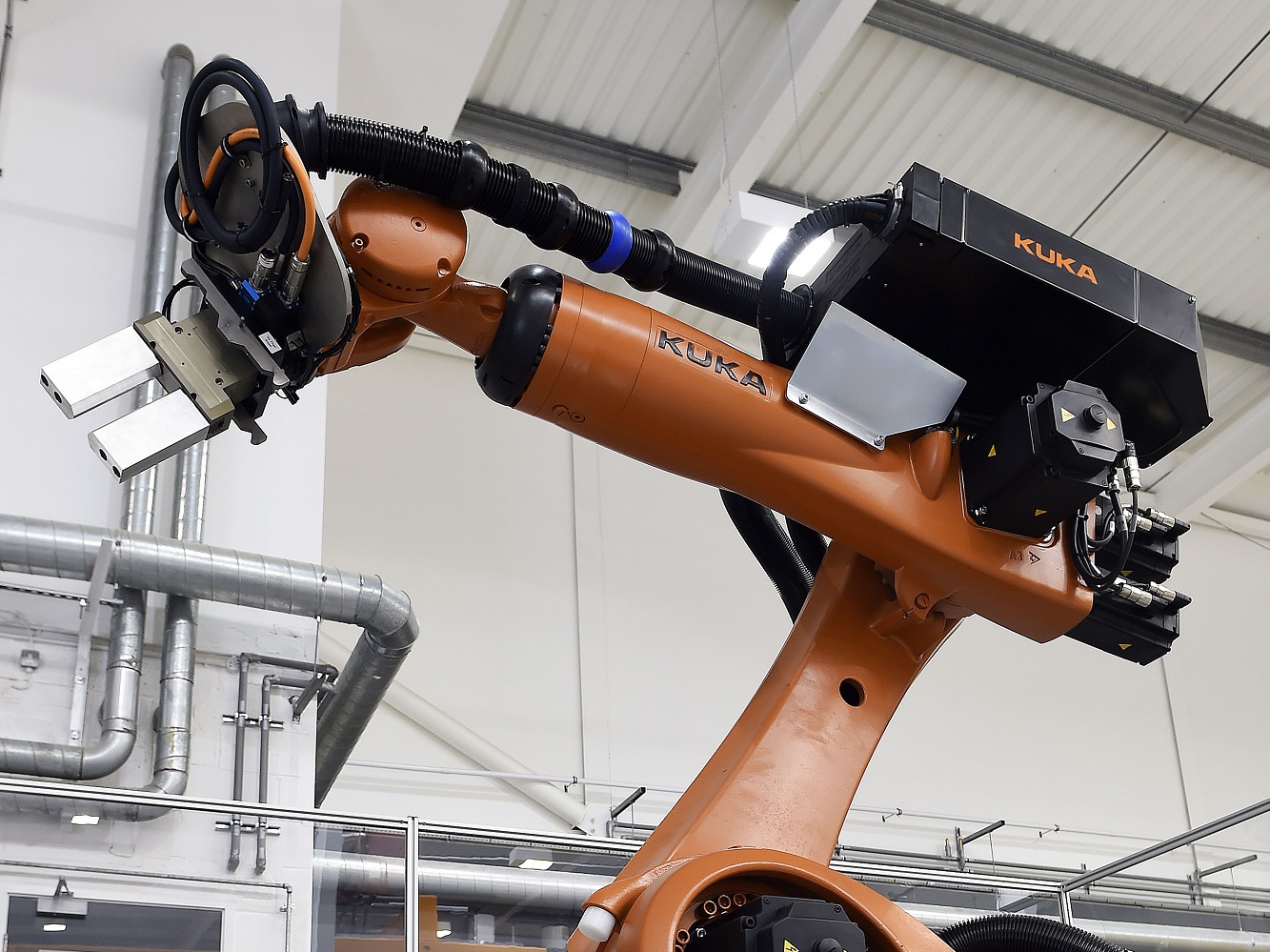RGU to research innovative robotic timber construction methods
Academic researchers are conducting a study into an innovative housing construction method which could help to bring down the cost for homebuyers.
The Scott Sutherland School of Architecture and Built Environment at Robert Gordon University (RGU) is collaborating with the Construction Scotland Innovation Centre (CSIC) and timber engineering firm Glulam Solutions on the project which will focus on the robotic fabrication of a cross-laminated timber (CLT) joint.

Image credit: Andy Buchanan
At the moment, most construction takes place as manual assembly onsite, which can lead to delays, inaccuracies, material defects and material waste. Robotic off-site fabrication will bring the benefits of industrialised production systems to construction.
Off-site timber construction has been widely explored in other countries, such as Japan, however, Scotland has not risen to the challenge of off-site timber construction despite having significant expertise in the area.
Theo Dounas, learning excellence leader at Scott Sutherland School of Architecture and Built Environment at RGU, believes the research project has the potential to significantly improve construction methods, helping to increase the quality and output while reducing costs and time.
“This proof-of-concept research project will look at process of designing a simple timber prototype house to address pressing market needs within Scotland and the UK,” he said.
“The innovation lies with the integration of a house design prototype and its robotic fabrication out of complex CLT panels manufactured off-site.
“At the end of the project, we envision that the consumer, the house buyer, will be able to select various options from a website and then we will be able to produce all components based on consumer demand.
“It is hoped that through this initial project, our solution could bring dramatic benefits not just to the Scottish housing market, but also to the Scottish construction market. We would then hope to develop a range of ideas and solutions, from logistics, to design, to the real testing of CLT joints, and formation of insulated composite panels.
“While this particular solution is tightly integrated with one design product, it is likely to be relevant to other building projects. We plan to develop a family of houses and other buildings using the technology developed through the project.”
Syd Birnie, managing director of Glulam Solutions Ltd, confirms that this is their first project with RGU and CSIC. He said: “This is our very first project linking an academic concept to our commercial approach and it’s an exciting prospect getting the chance to use CSIC’s robotic facilities.
“We are crying out for more innovation in the construction industry and we hope this is the first of many real advancements for timber engineered building solutions.”
Sarah Buchanan, a business relationship manager at CSIC, added: “CSIC was delighted with the response to the Robotics Challenge that we launched to enable industry to access the robotics technology in CSIC’s Innovation Factory at Hamilton International Technology Park together with access to our technical expertise to help the academic with applied research.
“We actively encourage industry to work with academics and technology and this collaboration is a great example where the model at CSIC really works.”























